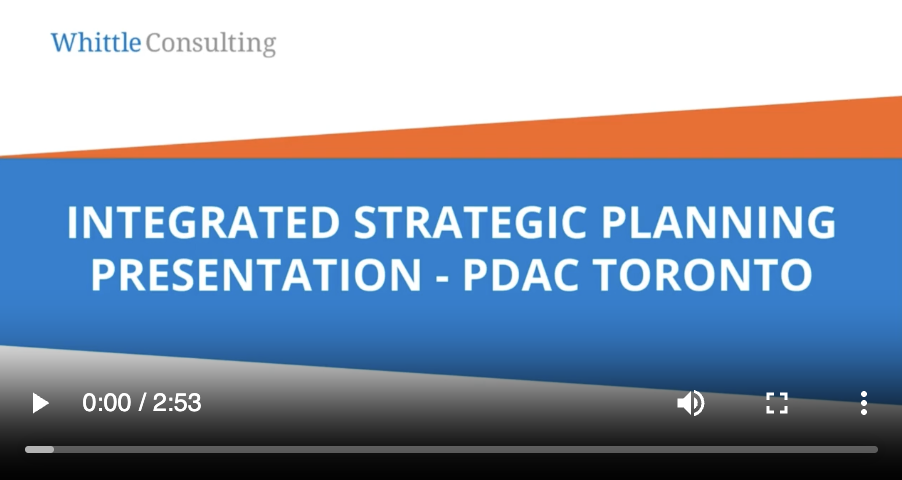Unlocking Mining's Potential with Theory of Constraints
Unlocking Mining's Potential with Theory of Constraints
- Posted by: Whittle Consulting
- On April 22, 2025
- 0 Comments
Watch Gerald Whittle, CEO of Whittle Consulting, as he discusses how Integrated Strategic Planning and the application of Theory of Constraints can significantly improve the economics of mining projects and operations, identifying bottlenecks and optimising various factors to enhance cash flow.
This approach can lead to dramatic increases in cash flow, often doubling it within the first three to five years of the life-of-mine plan.
Whittle Consulting's approach to maximising the flow of cash through Bottlenecks
Theory of Constraints (‘TOC’) is a powerful management philosophy that sees any system as having one or more "constraints" or “bottlenecks”. These are points of restriction in the system that limit its ability to achieve its goals. Used for many years in the manufacturing world, Whittle Consulting has honed its practice for strategic planning in the mining world. Understanding the bottlenecks becomes essential to improving the performance of the entire system.
A crucial step in this approach is redefining the objectives of a mining company. While traditional goals focus on maximising metal extraction and extending mine life, Integrated Strategic Planning encourages mining companies to prioritise economic value creation. This broader perspective considers all stakeholders, including local communities, governments, and environmental factors, alongside shareholders.
Whittle Consulting uses TOC to strategically optimise cash flow to enable a mining business to reach its full economic potential. The steps of TOC are:
1. Identifying Bottlenecks
The first step in applying TOC to mining is to identify the main bottlenecks in the system. These may be found at various stages of the operation. They could be some aspect of mining operations, a particular part of the plant, in the logistics chain, or in some cases the market itself can be the constraint. However, we are not looking for bottlenecks to tonnes but rather bottlenecks to cash flow – which is related to tonnes but not the same as not all tonnes have the same net cash value. The “Primary Bottleneck” is the part of the system that most limits the performance of the whole system. Understanding this constraint is critical to unlocking the full potential of the mining business.
2. Optimising Bottleneck Performance
Once the Primary Bottleneck has been identified, Whittle Consulting works on optimising its performance. This is not an engineering review of the equipment; it is a strategic approach to consider what the rest of the system can do to support it. Some examples of common primary bottlenecks are underground decline haulage capacity, mill power capacity, leach volumetric capacity, electrowinning output capacity, port loading capacity. It is sometimes something less obvious like ore body dewatering rates, tailings capacity, water or power supply, dust, ventilation. The approach is universal. In mining we have a significant opportunity to maximise the cash flow through of the Primary Bottleneck by controlling the ore feed profile in term of e.g. grade of target metal or some deleterious element, density, rock hardness, rheology, chemistry, melting point in a smelter, etc. This process will influence the pit, phase and underground shapes we design, and the mine schedule, cut-off, stockpiling, blending, grind size, mass pull, product specification, etc. There are so many levers to play with in mining.
3. Subordinate Everything Else
A key principle of TOC is that efforts to increase utilisation in non-bottleneck areas of the operation often have no positive impact may be destructive. Whittle Consulting encourages operations to avoid wasting management attention on areas that do not directly improve the performance of the system’s Primary Bottleneck.
4. Elevating the Bottleneck
We systematically work on the system to maximise performance, flood, or optimise the Primary Bottleneck. Note that Capital Expenditure to expand the bottleneck remains an option, but is the last thing to be considered in this approach. This de-bottlenecking – not at all what we mean here.
5. Repeat the Process
After working on a particular bottleneck, we may be so successful that it is no longer the Primary Bottleneck, and we have a new bottleneck. At that point, we turn our attention to the new Primary Bottleneck and repeat the process above.
There is a point at which this process achieves an end – that is when the Primary Bottleneck is at the point in the system that it should be (another discussion) for this type of system, and it is performing magnificently. Relax, and milk it.
TOC is more complicated in mining than in, say, manufacturing as the source of input is the highly variable ore body. The Primary Bottleneck can change several times during the life of the mine, and you can have more than one bottleneck at a particular time. Nevertheless, the Principles of TOC are sound, and they have a significant impact on the Strategic Planning Process for mining businesses and can be the source of substantial value improvement.
Want to learn more?
For those interested in pursuing Integrated Strategic Planning, Whittle Consulting offers an online seminar that explores the full spectrum of methodologies, featuring a comprehensive session on TOC tailored specifically for the mining industry. These sessions help foster cross-functional alignment and equip teams to shift toward more strategic, value-focused operations.
Contact Whittle Consulting today.


